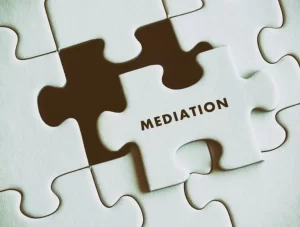Published in Medical Malpractice,Personal Injury on June 24, 2025
By Craig Heidemann
Somewhere around the third discovery dispute or the fifteenth email about deposition scheduling, it hits you: this case is going to settle. Everyone knows it. The lawyers. The clients. The court. And yet, we press on.  We write long emails, attend case management conferences, file motions to compel over marginal documents, and posture like we’re months away from trial. Why? Why do we spend so much time arguing over details that won’t matter once the check clears?
We write long emails, attend case management conferences, file motions to compel over marginal documents, and posture like we’re months away from trial. Why? Why do we spend so much time arguing over details that won’t matter once the check clears?
Because litigation isn’t just about whether a case resolves—it’s about who dictates the terms. Once both sides accept that settlement is coming, the fight turns to the specifics: how much, how soon, who concedes what, and whether there’s any language that preserves a sense of victory or dignity. That posturing—the grind over positions and optics—isn’t accidental. It’s how the terms of resolution get shaped. Lawyers don’t dig in on minor points because they care about them deeply. They dig in because they want to extract something in return. When you’re dealing with parties who expect compromise, you create pressure wherever you can. Delay becomes a tactic. Refusal becomes leverage. It’s not efficient, but it is often effective.
Emotions also play a massive role, though few lawyers are comfortable admitting it. Clients want validation. They want to feel heard, respected, and—sometimes—avenged. That need for emotional closure creeps into everything. It’s why a client will reject $99,000 when the original demand was $100,000. It’s why people fight harder when they feel personally wronged. But the lawyers aren’t immune to it, either. We talk about “zealous advocacy” and “being a fighter,” but often that just means we don’t want to look like we gave in too easily. Reputation is on the line. Pride is on the line. And once you’ve taken a public stance, it gets harder to back down—even when it would serve your client.
Then there’s the ever-present fear of folding too early. Every seasoned lawyer has wondered if they left money or leverage on the table by settling too fast. So we keep things moving, but not too fast. We reject the first offer, delay the response to the second, argue about the third. Not because it’s productive, but because it gives us time to feel like we’ve fully explored the angles. It gives our clients time to catch up. It gives the other side time to sweat. And it protects us from the regret of wondering what would’ve happened if we’d held out a little longer.
The system itself doesn’t help. Courts reward process, not efficiency. Hourly billing rewards time spent. Contingency fees reward patience and leverage. So even if both sides privately agree the case should settle, they still have incentives to keep playing it out. Motions get filed, depositions get scheduled, letters get sent. No one wants to look like they’re the first to stand down. Everyone wants to appear strong—especially to their own client.
And yet, we have tools that work, if we’re willing to use them early enough. Mediation is one of the best-kept secrets in the justice system—except it’s not a secret at all. It’s a near-magic process. It works 90% of the time, and when it’s done right, it allows parties to manage risk, control the outcome, and most importantly, have a voice.  It shifts the focus from posturing to problem-solving. I’ve seen angry, entrenched litigants walk into a room with crossed arms and walk out with signed releases and real closure. Federal court’s MAP program, when used at the right time, offers the same promise. The tragedy is that we often wait too long. We waste energy (and money) trying to break each other down when we could be building the terms of resolution instead.
It shifts the focus from posturing to problem-solving. I’ve seen angry, entrenched litigants walk into a room with crossed arms and walk out with signed releases and real closure. Federal court’s MAP program, when used at the right time, offers the same promise. The tragedy is that we often wait too long. We waste energy (and money) trying to break each other down when we could be building the terms of resolution instead.
But maybe the most telling piece of this entire dynamic is how some lawyers talk about it. They describe lawsuits in the language of combat. They say we’re “gearing up for battle.” They “fire shots” in discovery. They say we “hit them hard” in depositions. They call settlement a “surrender” or a “strategic retreat.” Even when both sides know a negotiated peace is the endgame, they still speak like they’re preparing for war. That language matters. It reflects how deeply ingrained the adversarial mindset is in this profession. And it explains why even the most straightforward case can take a meandering, expensive, emotionally exhausting path to resolution.
So yes, this case is going to settle. It probably always was. But not before everyone has a chance to push, to posture, to take one more swing. Not before each side gets a chance to say they stood their ground. Because in litigation, the argument isn’t just a detour—it’s part of the destination. Maybe if the parties looked at the detour of mediation as the destination instead of a detour, resolution would be achieved sooner which is often the best outcome for all concerned.
